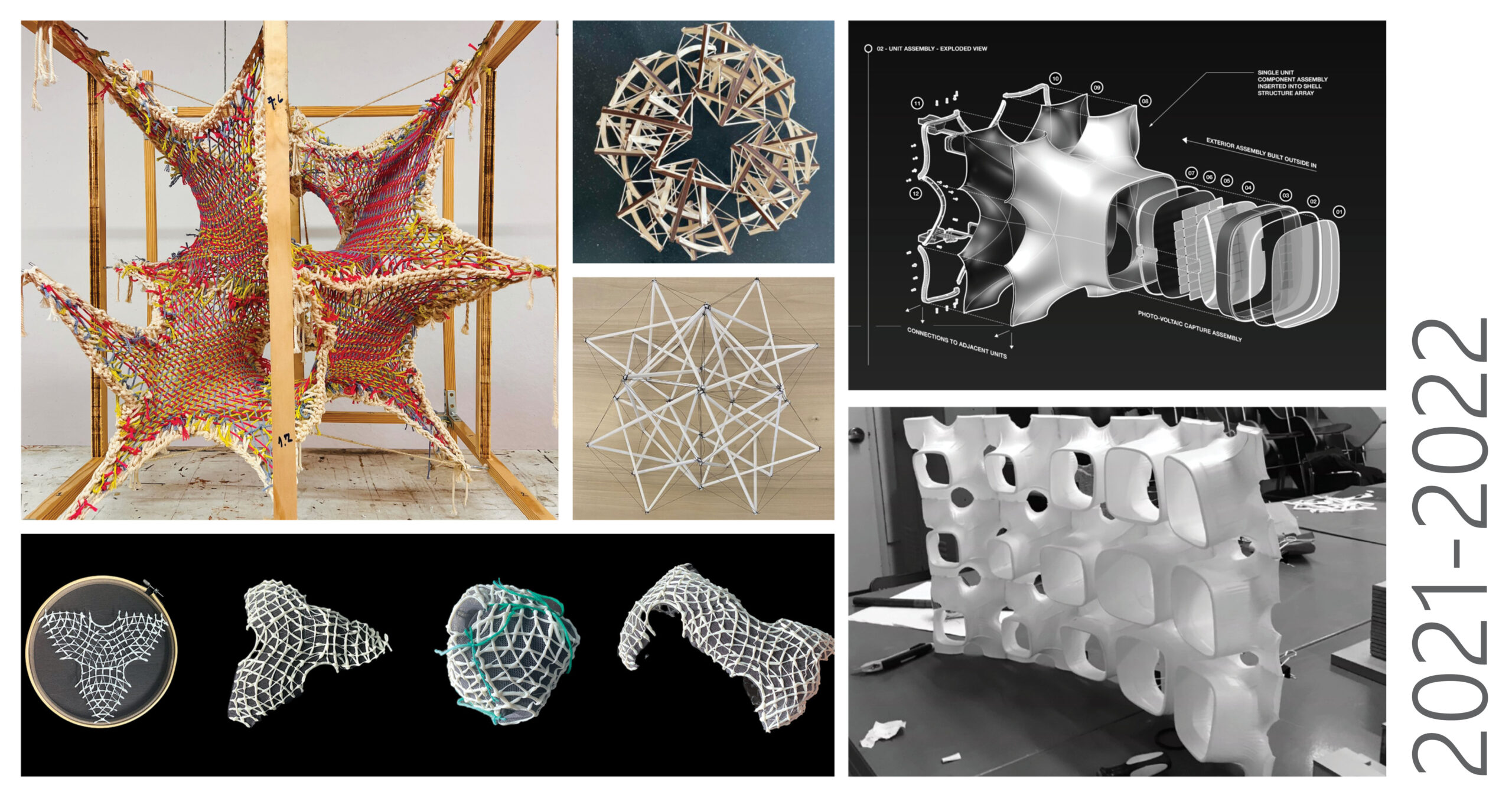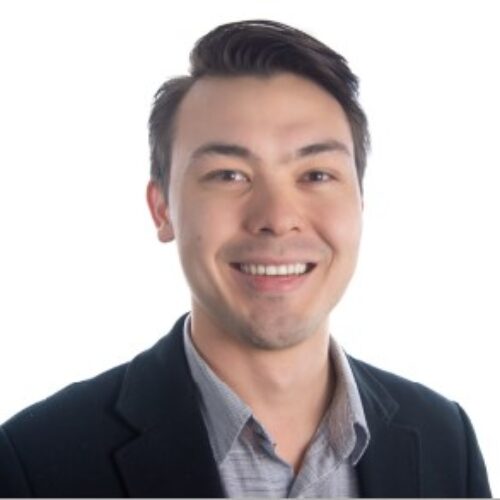Morphology Studios 2021-2022

MORPHOLOGY IN PRACTICE
Our class explores the opportunities of form finding and systems development through the research and analysis of complex geometries, structure, form, and movement found in our built and natural environment. Through computational analysis and parametric modeling, we leverage institutional fabrication resources to test physical modeling techniques for materials research prototyping. The student Projects shown here demonstrate the exploratory outcomes of morphology principals and their interpretation in practice.
[Credits:]
Faculty: David Burke with Sergey Pigach
Students: Ziyu Chen (1-6), Noah Rosenberg (7-10)
THREE-DIRECTIONAL TEXTILE WEAVING
The class developed prototypes for various periodic minimal surfaces and their potential insight into advancing and automating manufacturing processes of textiles. Computational models were developed to simulate assembly sequence and to better manage the complex structural forces. Students focused on a particular technique of three-directional weaving to induce surface tension into a gyroid topology. The method was developed through a series of experiments, which produce incremental discoveries to find resolution in the material, method, and manufacturing.
[Credits:]
Faculty: Ajmal Aqtash
Students: Rita Bao + Julia Mendyk (11-13)
SELF-SHAPING ACTIVE TEXTILES
This class explored morphology through the topic of self shaping structures where applied materials restrict the contraction of pretensioned fabrics. Students first built digital models and explored the problem of how to flatten intrinsic curvature. The problem then reversed so that techniques and patterns could be developed to predict and build 3D positive and negative curvature topologies into physical models from stretched 2D fabrics. Projects focused on utilizing discovered topological properties and spatial symmetry for repeatability in fabrication.
[Credits:]
Faculty: Robinson Strong
Students: Maika Yoshikawa (12), Elif Uyer (13), Jung Oh “Alice” Lee (14), Yiwen Chen (15-16)
TOPOLOGICAL TRANSFORMATIONS
The class explored spatial deformation of tensegrity structures derived from polyhedra and triply periodic minimal surfaces. In exploring spherical tiling and torus topology, spatial projections were developed to transform and construct curved tensegrity modules. Students also built parametric models, computational simulations, and structural analyses of their prototypes.
[Credits:]
Faculty: John Gulliford
Students: Maika Yoshikawa (17-19), Anna Kondrashova (20-21), Jiayue “Chloe” Ni (22-23)
